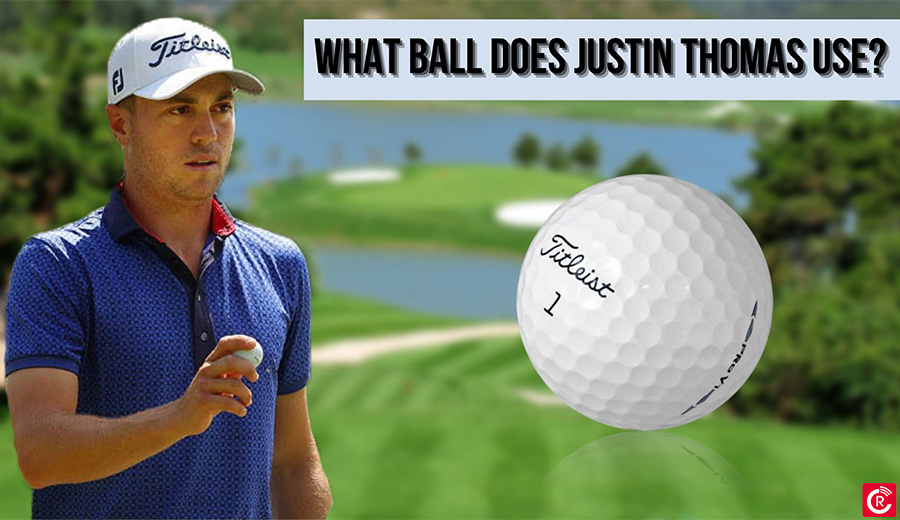
Have you ever wondered how a PGA Tour golfer decides the best Titleist golf ball for his game? With something uncertain on the Tour, a player’s faith in his golf ball must be shell casing. To achieve that degree of comfort, golfers must collaborate with the Titleist R&D team to assess every shot in a player’s bag and every playing circumstance imaginable.
Short Irons and Full Wedges
Justin Thomas began his latest golf ball testing session around the green, analyzing the new Pro V1x and Pro V1 golf balls fared in the short game.
Fordie Pitts, Titleist Tour Consultant for Golf Ball Performance, documented JT’s performance and i
nput before moving to phase two – complete strokes with wedges and short irons.
The world’s finest short iron players are aware of their launch window and want to watch their golf ball fly across a particular portion of the sky that they see while imagining an approach shot. However, we’ve discovered in Titleist R&D that the angle of fall is just as significant when it comes to scoring clubs. If the angle is excessively steep, the ball will strike the green and spin backward, towards the front, and occasionally off the green.
Justin’s team aims for a penetrating flight (with a little more spin) that lowers towards the green at an angle, resulting in Drop-and-StopTM shots in this portion of the golf ball review. The ball comes to cease very close to wherever it first strikes the green, which is a trademark of Pro V1 and Pro V1x performance. The Pro V1 model that includes this feature will allow JT to take dead aim and know that a well-executed shot will result in an excellent opportunity for birdies. Consider an approach shot. However, we’ve discovered in Titleist R&D that the angle of fall is just as significant when it comes to scoring clubs.
The Short Game
Justin analyses how well the Pro V1x and Pro V1 feel, fly, twist, and react upon that grass with the assistance of his dad and trainer, PGA Expert Mike Thomas, and Fordie Pitts, once he starts playing the exact pitch and pitch chips shots which he’ll need to rely on in that round.
Mid-Irons
Justin Thomas examines the new Pro V1x and Pro V1 golf balls by following the Titleist proposal to golf ball fitting to a tee, starting around the green, and working back. With a firm grasp of how each ball performs with scoring clubs on chips, pitches, and green-light approaches, Justin and colleagues are now looking at how the new V and X perform with mid-irons.
Similarly, on mid-iron approaches to access hole placements, golfers will frequently modify their trajectory, flighting shots down to attack pins in the back areas of greens and making higher approaches to front pin locations.
When Justin performs his mid-iron strokes flawlessly, he anticipates that any ball will provide him with several birdie opportunities. However, golf is primarily a game of misses. When Justin fails to hit a mid-iron shot precisely as planned, the errant ball might land him in a bunker, thick rough, or worse. However, whether it’s a Pro V1x or a Pro V1, the correct ball will still leave him on the putting surface.
The Long Game
Now that Justin Thomas has examined how the new Pro V1x and Pro V1 golf balls perform with scoring shots – iron approaches, whole wedges, and delicate shots around the green – it’s time to go big and launch the new models off the tee.
The driving session commences using a TrackMan monitor to accumulate baseline data on the spin, launch, and ball speed values that each new model can offer. Then, when Justin catches a drive “right on the screws” with his new TS3 driver, he and his staff want to know which model will optimize his carry and roll-out.
Justin knows he’s coming close to discovering the model that will perform best for him off the tee and in every facet of the game as he ticks the boxes with each swing.
Conclusion
Justin Thomas now knows how the new Pro V1x and Pro V1 perform in every field of his game, including chipping and pitch shots about the green, whole wedges and iron passageways from the fairway, and tee shots with the new TS3 driver. According to, Reviewscast.com the most notable element of the golf ball fitting method is examining and analyzing golf balls on the golf course because it reveals details that cannot be noticed on the practice range.





